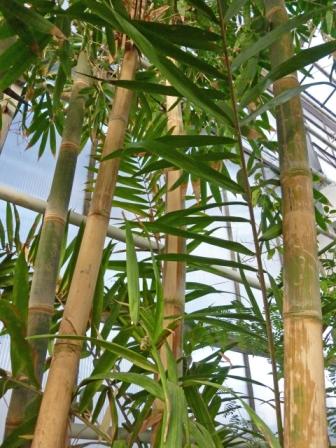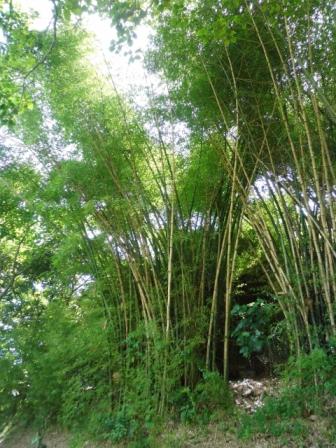Natural Regeneration :
Artificial Regeneration :
- Propagated by plant stock, branch cuttings or culm cuttings.
Seed collection and Storage :
- Rarely flowers but does not set seed and the clumps usually survive.
Seed Treatment :
- The seeds should be soaked in cold water for 24 hours.
Nursery Technique :
- Seed is broadcast in raised mother beds of size 10 m x 1 m, in September to October.
- Approximately 1.5 kg of seeds required for standard mother bed.
- Germination takes 10-20 days.
- 3 months old seedlings are pricked out and transplanted in poly bags and watered regularly.
- Seedling may attain 60 cm tall in one year are suitable for planting.
Plantation technique :
Season of planting
- Planting during the pre monsoon showers or just prior to active monsoon ensures better survival and quicker field establishment.
- If irrigation of the plants is feasible planting may be delayed by a few months even up to December.
Pre planting operations
- Demarcation and fencing to be completed at least three months prior to planting. Weeding, at least 15 days prior to planting.
Pit size & treatment
- 45 X 45 X 45 cm cubical pits to be half filled with soil and kept exposed to sun for sterilization for about a month.
Planting
- Along with the pre monsoon showers when the soil is sufficiently moist, the pits are to be completely filled and planted with one year old planting stock.
- The filled up soil to be compacted aroundthe clump.
Spacing
- Spacing of5 X 5m to be maintained when grown for timber production.
Care & Disease Control :
- Bamboo has to be kept well weeded, both in nursery and young plantation.
- It must be protected against cattle grazing, browsing and fire.
Irrigation :
In bamboo planting, irrigation should be carried out frequently while they are grown on nursery beds. Immediate irrigation should be given at the time of transplanting seedlings from nursery to main field. As bamboo trees are sensitive to water logging, make sure to drain out the soil in case of heavy rains or flooding. Subsequent irrigations depend on the soil moisture holding and climatic conditions. It’s preferred to let a plant go a little dry and water it. A drip irrigation system can be adopted for better utilization of water. Over watering will make the tips of leaves to turn into brown.
Recommended Harvest :
- Felling starts 5th year onwards.
Yield :
- Annually about 275-300 productive clumps per hectare
- 3-4 tones at first cut.
- 5-6 tones at second cut and
- 8 tones at third cut.
- Expected yield per hectare is about 70-75 tones over the entire life cycle.
- Industrial plantation of Bamboo yields 3 tones /ha/year.
Agro Forestory :
- Various agricultural crops have been found successful like tomato, watermelon, sweet potato, ginger and turmeric.
- During the first three years, it is possible to cultivate profitable intercrops such as turmeric, ginger, chillies etc. and various shade loving medicinal and aromatic plants.
Major uses :
- They are used for light construction, fences, tool handles, handicrafts, irrigation pipes, lattices, bridges, housing, furniture, boat masts etc. They are a good source of pulp for making paper. The split stems are used for making brooms, fences, roofs, roof tiles, baskets etc.,
- The acrid smoke produced from burning the stem is used as a mosquito repellent. The stems serve as poles to support banana plants.
- Used for shelterbelts and erosion control on sloping ground and stream banks. Planted as a barrier and marker along boundaries.
Market details :
- Approximately Rs.4000 to Rs.4500 / ton.



